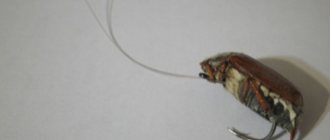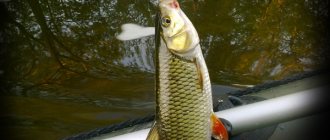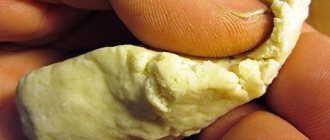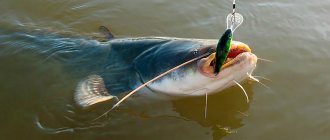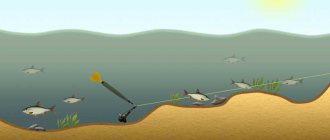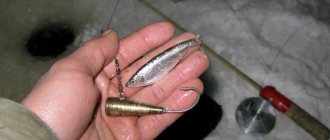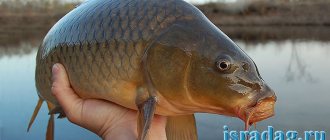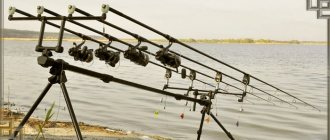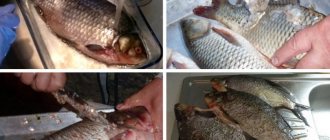general information
The May beetle and its larva The May beetle
is a fairly large insect. Its body reaches up to 35 mm and is colored black or red-brown. In nature, they inhabit forest-steppes and forests, mainly light coniferous (pine).
In the spring (usually in May) the beetles begin breeding. After mating, the females burrow into the soil and lay eggs. One female May beetle lays up to 70 eggs and then dies. After 1-1.5 months, large, white, quite mobile larvae
. They are easy to distinguish from other larvae, as they seem to be curled into a ball.
Khrushchev larvae live in the soil for 3 to 4 years, and then turn into motionless pupae, which are similar in appearance to adult beetles. The final stage of development of the cockchafer is the imago, when the pupae turn into beetles. This process occurs in late summer or autumn. Young beetles emerging from pupae overwinter in the soil and emerge to the surface in the spring.
Under favorable weather conditions in nature, the population of cockchafers increases, accompanied by a massive flight. The peak number of May beetles is observed 20-25 years after a 3-4 year break in their activity. Right now (that is, these years) there is a peak in the reproduction of these pests. It is believed that this activity can last about 10 years, so it is important to know how to control this pest to reduce the damage it causes.
What time do cockchafers appear?
The genus of these insects includes 24 species, 9 of them are inhabitants of the territory of our country. Their mass appearance coincides with the onset of spring, with the peak of distribution occurring in May.
The beetles appear when oak buds and birch leaves begin to bloom. At this time, you can see cockchafers crawling out of the ground and immediately flying up. They sit on trees and begin to eat their vegetative parts, including flowers in their diet, thereby causing irreparable harm.
Search for chafer and larvae
The easiest time to find the cockchafer is, naturally, in May. You can early in the morning (before the sun rises): hit a tree trunk (oak, linden, maple) with a large stick - and pick up the “harvest”. Place leaves from the tree favored by the beetle into the container with the beetles. In the evening we collect in this way: when it gets dark, we lay a white cloth under the tree and turn on the flashlight, and knock down the arriving beetles with our palm or hat down. The activity, I must say, is very exciting!
Now let's talk about the offspring of this beetle. At the end of summer, larvae begin to form; they grow for 3-4 years in the ground, feeding on plant rhizomes. Upon completion of growth, the larva becomes a pupa and the cockchafer emerges. The larva is also a “delicacy” for fishing. You can find their clusters in the ground (crowds of rooks often suggest these areas), or you can find them on a tree. Then, when the poplar fades, you can see “bumps” on the branches of the tree, opening which you will find larvae.
Bark beetle larvae
Another bait undeservedly forgotten by many is bark beetle larvae. Often it is this bait that helps out during periods when there is no bite. There are more than a hundred species of different bark beetles. The sizes of the larvae vary from one to three centimeters. The head is dark and the body is light.
You can find bark beetle larvae under the bark of diseased or fallen trees. When searching, keep in mind that bark beetles prefer moist and shaded places. You can also look for them in tree stumps. By removing a piece of bark, which is not at all difficult to do from an affected tree, you can see numerous passageways. And already in them are the larvae themselves. The largest larvae are usually found in pine and spruce trees.
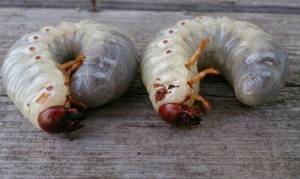
Using any sharp object, it will not be difficult to collect the required number of larvae for fishing. Bark beetle larvae are perfectly preserved for a long time. To do this, it is recommended to provide them with food. Naturally, pieces of the tree in which they lived are best suited for these purposes. Each type of larvae has its own, and therefore there is no need to mix them with each other. As a last resort, you can add sawdust and moistened dust. They need to be stored in a dark and cool place. The best option is a basement or cellar.
When a bark beetle larva is pierced with a sting, a fragrant aroma is released, which the fish are simply crazy about. Large roach, ide, bream and perch are especially willing to bite on bark beetle larvae.
You can make an imitation of a bark beetle larva yourself from foam rubber. Having cut out a similar larva, you should decorate the head with a felt-tip pen. To give the artificial larva the appropriate smell, you need to moisten it a little in fir oil. In this simple way you can easily deceive the fish, but still real bark beetle larvae will bring the best results when fishing.
Fishing for the Maybug
Fishing for May beetles The most optimal period for catching beetles is the time when they begin to fall to the ground.
Horse fishing
When fishing on horseback, when it is required that the insect remain not only afloat, but also alive, both the leash and the shank of the hook should not be inserted too low (close to the abdominal scutes), since the nerve trunk runs in the lower part of the abdomen. When there is a need to fish in the water column with a diving beetle or with a wire, the hook is threaded from below through the abdomen with the sting coming out at the bottom. As it dives or is under excess pressure at depth, the abdomen fills with water and becomes the heaviest part of the beetle. For this reason, when fishing for May beetle inside the water layer, most fishermen remove the hook from the tail - thereby destroying the respiratory system of the insect and its other vital organs. During the fishing process, a beetle baited in this way always goes with its belly down and forward, provoking the fish to counter and instantly grab the place where the hook exits.
Sometimes the beetle's wings are spread, for which each elytra rotates 180° around its axis to break the ligaments. The position of the emerging hook does not change: the sting is under the head when fishing from above or under the tail when fishing at the bottom. But when fishing on horseback, the deployed wings provide the insect with natural gliding and silent splashdown, and when fishing in a stream they give a “helicopter effect” - giving the body of the bait a rotational movement. A similar rotation, but when fishing for small beetles, is achieved by baiting two individuals - back to back and with the sting extending from the abdomen to the head of the outer one.
One detail should be noted: as to whether it is worth unfolding the elytra, tearing them off altogether, releasing only the wings from under the “roof,” or fishing with a beetle in a completely “closed” version, there is no consensus among anglers. And beetles end up in the water in different forms: whole and half-torn, sleeping and unsuccessfully flying off, alive and dead.
Fishing on top
When fishing from above, both with the largest May beetle and with small raspberry and June beetles, one insect is used, strung on a hook with the sting coming out under the head. Small beetles, which often attract ide and rudd, are caught with relatively small hooks (No. 5-6 (according to ON) or No. 8-10 (according to MN)). It is better to bait a real May beetle, intended for catching largemouth chub and asp, on hooks No. 7-10 according to ON or No. 2-7 according to MN. It is better to use hooks with a straight, slightly shortened or normal-length shank and a hook with a classic round shape. Models of “broken” configurations will unnecessarily “mutilate” the insect’s body and tear its flesh when baited. When using a needle (a furrier’s needle, for mounting boilies, or a sewing needle with a “torn ear”), “Mustangs” with a smoothly curved fore-end are also suitable. The services of a needle for threading a leash through a beetle and inserting a fore-end into its body should also be used when equipping the tackle with ordinary hooks.
The bait holds more securely, more aesthetically pleasingly, more naturally; the beetle often manages to live after the injury - which cannot be achieved by inserting a hook with a sting and then turning it inside the insect's body to exit in the right place. On top of the beetle they catch it with fly fishing. Short fishing (if the lengths of the line and rod match) can be fished using more primitive methods that imitate the above-mentioned elite type of fishing, but without a cord, leader, or a special rod with a reel. Due to the impossibility of using a sinker to cast a tackle when fishing on top of a chub or ide, in quiet, deep places under the shore they are often caught by “bumping” through overhanging bushes - lowering the beetle vertically and forcing it to twitch on the water surface. You can fish in another way: by getting used to throwing a light and sailing bait in calm water under the canopy of coastal trees, and also by floating it along a weak current along a wall of reeds or along the reach of a narrow river.
In the accelerated flow of riffles, chub, ide, and asp are more often caught at half-water (more precisely, in the bottom layer) than at the top. This method is close to fly fishing with a nymph, but in the case of a light and voluminous beetle, the equipment requires a small load. The sinker should ensure only a leisurely and smooth immersion of the beetle (transfer it into the state of a gradually heavier “suspender”).
The casting range can be increased by introducing a ball float of variable load capacity (water-filled) into the equipment. Any rod with guides and a reel will harmonize well with this “helper”. It’s just that the equipment used when fishing with a ball float (fly fishing and spinning) of the “ball at the end of the line” type and tying short (10-15 cm) leashes a meter from the “bubble” and above it along the main line will have to be abandoned. When fishing with a beetle, a leash 1-1.5 m long is attached below the float. In this case, it is better to refrain from using “braids” that are clearly visible in the light in favor of relatively transparent monofilaments (scattering, rather than reflecting or absorbing light).
With a ball float, you can catch it by releasing it downstream (from a boat, bridge) and across the stream (from the shore); above and in the water column. If fishing is carried out in the water column, then the equipment is supplemented with a sinker installed 0.5 m from the hook. The float can be attached either blindly or as a free-sliding option along the main line (with the expectation that it will be pulled by the current or by a sinker when the bait is immersed). This gear is used when fishing at depths of up to 2 m for a beetle that is slowly sinking or swimming in mid-water.
Fishing with a float rod
At depths of more than 2 m, these fish are caught with ordinary float rods in a line and in a plumb line with equipment held by a rod. This fishing method is most suitable during the day. The main condition when fishing for a beetle is that the bait does not lie on the bottom - in this position it attracts little fish. The beetle should swim 0.3-0.5 m relative to the bottom or be tossed by the current at the same level (which is facilitated by open wings). The lower load should not be heavy, so a loading system is used consisting of a main sinker (installed above the hook at a distance of 50-70 cm) and a “support” (distanced from the nozzle by 25-30 cm). As summer approaches, it is better to avoid fishing with beetles in strong currents and shallow water - the result will most likely be negative (at least in the daytime).
Fishing with donks
Fishing for beetles with donkeys is most successful in the early morning, when the fish stay under the rifts and at the transitions from the shallows to the pit. The bait should be easily lifted by the current above the bottom and constantly be in motion. For this purpose, the leash is extended to 0.5 m, and the beetle's elytra and wings are straightened. Sometimes a more advanced fishing method is used. The sliding sinker ensures free slipping of the fishing line and its pulling by the bait. Periodically, the line is released under the pressure of the stream by 1-2 m and pulled back. In our country, this technique is known as “rolling” fishing; abroad, fishing with a fishing line freely sliding through a stationary sinker is called the “Florentine method.”
Baiting a cockchafer on a hook
May beetle and its larva on a hook As a rule, only two options are used for baiting beetles on a hook: with the sting of the hook removed from the abdomen (under the tail) - for fishing in the water column;
in front under the head - for fishing from the surface. In this case, the hook must be placed under the beetle, which is especially important when fishing from above. Extending the frontal part of the hook (sting) above the beetle or to the side will contribute to the unnatural collapse or capsizing of the floating insect, which is extremely undesirable when fishing. The sting coming out from below, on the contrary, plays the role of a keel, and the forend of the hook located inside the hook serves as ballast. With a hook extended from below and from the side of the head, the beetle floats on the surface in a uniformly semi-submerged state.
If the hook comes out from behind and downwards, then the beetle will sink with its abdomen, and this is no longer typical for a living or even dead (but still buoyant) insect. The high buoyancy of the cockchafer is caused by the presence of air reservoirs in its abdomen, due to which the beetle is able to inflate its body. In addition, in the upper soft part of the abdomen, under the protection of hard elytra, there is a heart vessel. Therefore, if the hook is inserted correctly: from below into the chest and with an exit near the head, or the leash is passed with a needle through the center of the abdomen or just below it, the beetle swims better and more naturally, being hooked a little more by the head than by the tail.
Tackle
In principle, you can catch the cockchafer even usually with a fly rod without a float and weights. It is enough to just tie a hook to the fishing line that is commensurate with the nozzle and you can throw such equipment into the water. However, with such equipment it will not be possible to fish effectively in many places, and it would be most advisable to fish with a spinning rod and a bombard. This gear consists of the following elements:
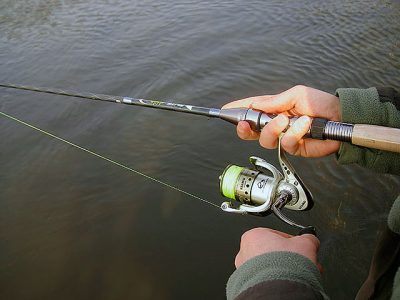
a spinning rod up to three meters long and 20–25 grams of dough;- lightweight spinning reel;
- main cord or monofilament;
- sbirulino (or homemade foam float);
- Fluorocarbon leader with attached single or double hook.
Fishing with May beetle larvae
For fishing, larvae about 25 mm long are used. Before using them, they should be placed in water and the dark contents carefully squeezed out. They are then placed in small boxes with sawdust mixed with a small amount of cottage cheese. It is better to store them at a temperature of +4 - +10 °C.
You need to place the hook on the hook from the head, bringing the tip of the sting out from the tail side of the body. May beetle larvae are an excellent bait for catching medium and large fish: chub, ide, catfish, carp.
Any fish loves the larva of the cockchafer. When catching small fish, the larva is cut, the sting of the hook is brought out through. But if you come for a “large fish,” then bait it entirely, removing only the head and the dark back part. Large perch, ide, carp, chub or pike will not swim past such a “dessert”. The nozzle needs to be checked and changed periodically, because... the fry can eat it up little by little.
Chub fishing spots
The cockchafer usually gets into the water by falling from overhanging branches of trees and bushes. Obviously, such places are the main ones in the area of which it is worth catching chub.
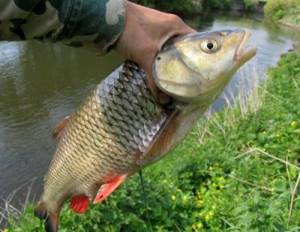
However, not everywhere under overhanging trees there are conditions for the big-faced to stay. Therefore, a beetle that falls into the water can swim some distance until it is eaten by a chub or other fish. In addition to overhanging trees, you can catch chub in the following places:
- steep yars with hard ground;
- stuck areas;
- riffles and shallows;
- hydraulic structures.
In any case, no matter on which river you happen to catch a chub in May using chub, it is not so difficult to find the fish, since the chub feeds from the surface of the water, actively manifesting itself in splashes and circles spreading across the surface.
Bait storage
The cockchafer can be stored in any container that can receive air. This can be any plastic box with holes in the lid. It is advisable to place some foliage or grass at the bottom of the container.
You can also store the cockchafer for future use. It’s no secret that this bait is relevant almost throughout the entire open water season and can be used when catching chub and ide all summer and early autumn. To do this, place the collected beetle in a glass or plastic container with ice cubes and place it in the refrigerator. During storage, the ice needs to be changed periodically and ensure that no moisture gets into the container with the beetles.
It is better to store the larvae in a container with dried tea or moistened poplar sawdust.
Types of bait
When I first started fishing and really got into this process, I used butterfly larvae as bait. This is a really good solution. These are moth larvae, Chernobyl. In winter, they are found in wormwood or burdock. The size of these larvae is no more than 0.5 cm. They are quite light in color, but there is a certain yellowish tint. These insects remain to spend the winter on plants, as they will have enough food and sugar. In general, they survive the winter without problems.
- Interesting! Butterfly larvae especially attract fish because they have a pleasant, sweetish taste.
This bait is perfect for jig fishing. It is better to prepare the larvae themselves for fishing even before frost sets in. At sub-zero temperatures, all plant stems dry out, larvae become more visible, and birds eat almost everything in their path.
It is also recommended to pay attention to other types of bait:
- Fly larva for fishing. This bait is also considered quite popular, like worms. But it has a serious advantage - the possibility of long-term storage in the refrigerator. Can also be stored in boxes with sawdust. But in our country, such a larva shows the best results only in spring or summer fishing. Perch especially like this bait.
But frankly, the problem is the “skills” of modern fishermen in using maggots in winter, not the bait. Talented, experienced fishermen catch large fish even in the winter season using maggots.
- A bark beetle larva is also suitable for fishing. This type of bait lives directly in tree bark and feeds on wood accordingly. If you want to get this bait for fishing, I recommend that you simply go into the forest first, find a fallen tree and get the larvae from under the bark. These larvae can be used from autumn to spring, when they are at their largest. If you want to make supplies for a long time, you can store them in the refrigerator or sawdust.
- Most often I take a dragonfly larva with me for fishing. This is also an equally important bait, which is ideal for winter fishing, and all the fish bite on it. These insects sit perfectly on the hook; fish are not able to knock them down in the water.
These larvae need to be collected in cattails. I also store them in special boxes with grass in the refrigerator, where they feel just great.
Sometimes I buy beetle larvae for fishing in specialized stores. But most often, I make the preparations myself, at certain times I go to the forest for bark beetle larvae and always stock up on dragonfly larvae for winter fishing.
